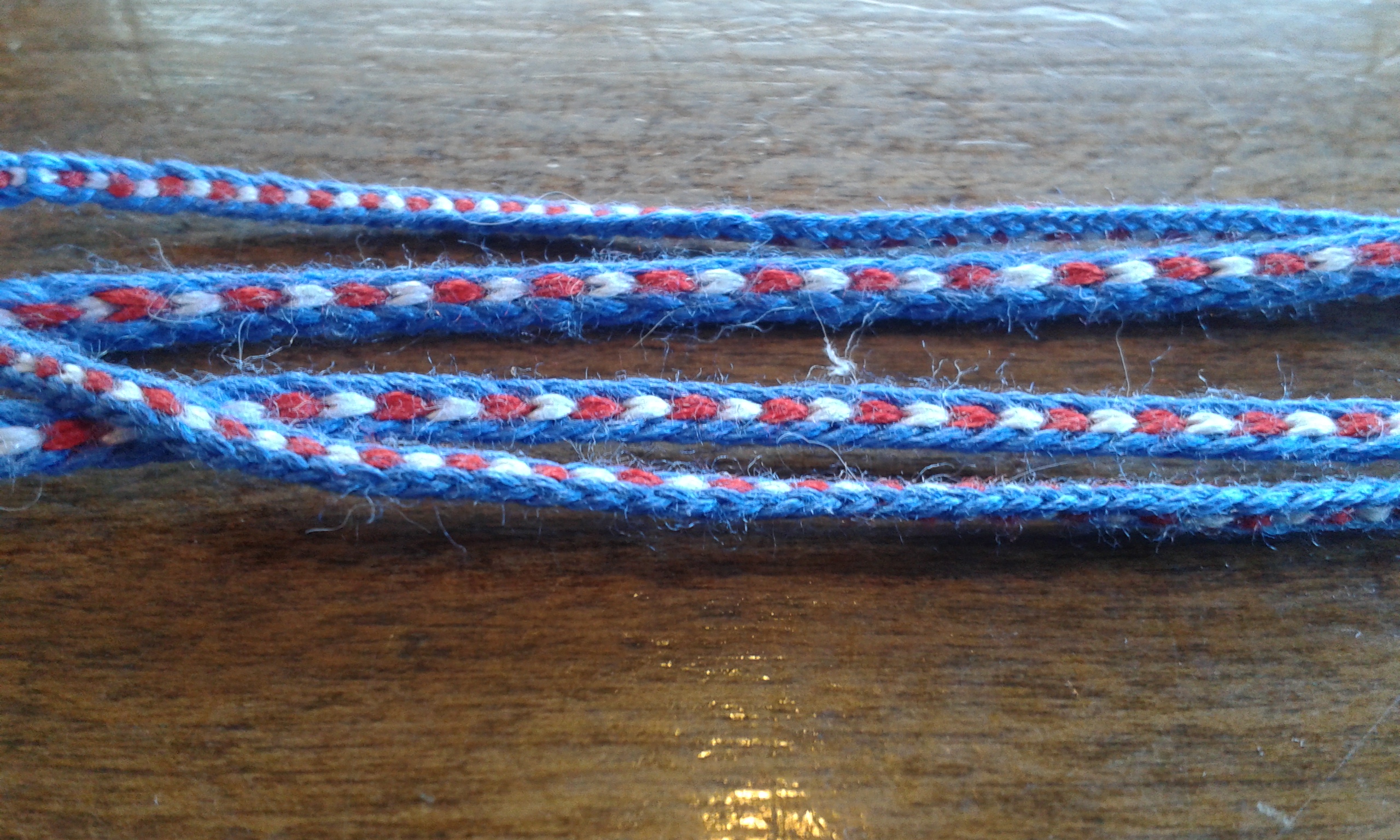Before abeyance, the Fibre Guild ran a project to produce award cords for each reign of the kingdom.
Award cords are a fantastic way to try out a new-to-you technique, and have a Useful Thing at the end of it. It’s a great way to experiment with building new skills.
The Crown can always do with more award cords!
Please note that this information will be updated as the Fibre Guild swings back into gear. For now: please search the archives for “award” cord posts to find heaps of amazing tutorials from our members!
What is needed in an Award Cord?
Award cords are used to string award tokens which are given out to worthy recipients. Basically, they need to be functional (i.e. not break, and large enough to loop over a head) but any upgrade on a craft ribbon or a piece of string is much appreciated.
Length: 70 – 90 cm
Cords should be able to be easily, elegantly and quickly slipped over people’s heads in court. Many people wear headgear that requires a large loop, so a longer cord works well.
Hardware

Award tokens need to be able to be easily added to the cords. A jump ring should be attached to the centre of the cord (loose or woven in) so that the token can be attached.
The award cord shown here has a token threaded onto the spiral cord with a metal loop that looks like a jump ring.
The ends of the cord could be enclosed with a clasp, but if not, aim for a neat finish if you can.
Technique
Period techniques are appreciated, but not required, although the end results should look plausibly medieval. Here are some techniques that we recommend:
Tablet weaving
Naalbinding
Lucet
Plaiting
Fingerloop braiding
Finger weaving
Twisting
Knotting
Chaining
Ply splitting
You can find tutorials for some of these techniques on this website: search our archives for “award” cord posts.
Materials
Any medieval looking material may be used. Choose a material that suits your project, but don’t break the bank when it comes to budget!
As we are a fibre guild, we naturally recommend natural fibres:
Colours
Cords in any colour will be accepted, but most appreciated will be cords in the kingdom colours of red, white and blue. The cord does not have to incorporate all three colours – it may be monochrome, or a two-colour cord.
Artisan Details
Please label cords with the artisan’s SCA name so that the hard work and skills of our artisans can be appropriately recognised.
It’s also lovely to note the technique and material used for each cord.
About the historical award cord project:
This project was inspired and based upon (with permission) a project undertaken by the east kingdom guild of narrow-workers. It aimed to supply royalty each reign with enough pieces of cord to string all the award tokens given by the kingdom.
Prior to inception of this project many award tokens were given strung on cheap craft ribbon or unbraided string, which was not elegant and very quickly became shabby and broke if the recipient did not restring the token.
Royals give a lot of awards which have strung tokens each reign — from 30 to 60 every six months. The fibre guild aimed to meet that need, but realised that even if a fraction of these are strung on nice strings, this is a good thing.
Because of the number of cords required, this project aimed for quantity over quality. All a person making a cord need ask is “does this look better than tatty craft ribbon?”.
Traditionally the fibre guild award cords were given as gifts at a new Crown’s coronation. A guild member would normally present the cords in court to incoming royalty.
